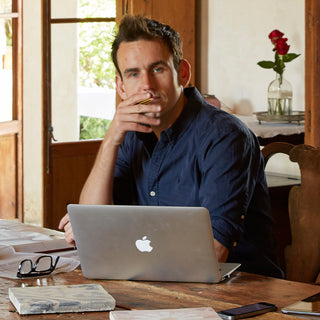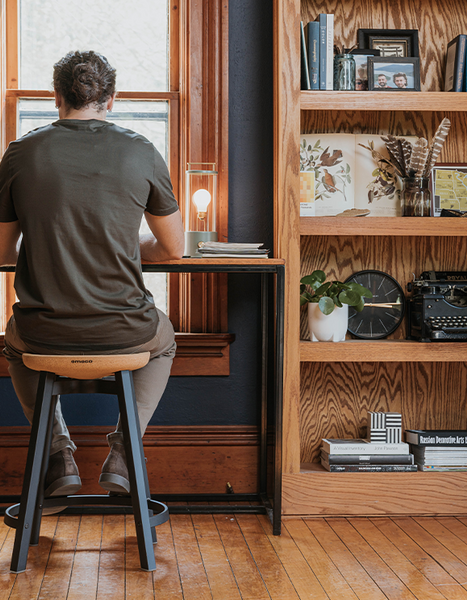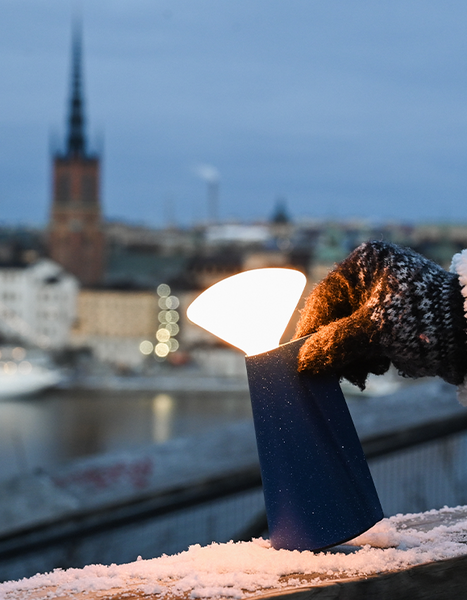Talking Tiles With Lee Thornley Of Bert & May

After leaving his day job in the city, Lee Thornley found his calling in the hills of Andalusia, where a chance encounter led him to invest in a family-owned tile business. Rebranded as Bert & May, Thornley's passion for exceptional materials and craftsmanship shines through in every design.
Bert & May was conceived while you were working on a hotel project in Spain, and there is a nice parallel with the Tala co-founders, who dreamt up the idea for Tala while working on a project in Europe. What was it that drew you to tiles and how long did it take you to set up the business?
I was a junior lawyer in London and moved to Spain to build this hotel, Casa la Siesta. I think it took in total a year and a half to build, and I discovered very quickly that the tiles were massively fundamental to the interior design style. A guy had rocked up in his BMW and asked if we wanted any tiles, and I remember going out to the front of the house and him opening his boot and showing me these tiles and I'm thinking “they're pretty nice, I'd like to get some of those.”
And then that's how the whole relationship started. I literally ended up building a tile brand because this guy came along with his car boot full of tiles. I then went to see his little factory in the middle of these hills in Cadiz, and thought that I could bring my very little commercial knowhow to something of success.

How do you go from that type of day job to then dreaming up a business idea and launching it?
I think we've all got to recognise that we're here to live once and you've got to take risks and do fun stuff. And I just knew that I didn't want to be doing the grind in central London and thought how on Earth can I do something different. So, I went out to Spain to learn Spanish, fell in love with the idea of living outside and having a better quality of life, and never went back to my London flat. I literally abandoned it. It was a rental flat and I left all the furniture there. That's how you do it.

At Bert & May you are committed to ‘exceptional materials and fine craftsmanship.’ Why was this so important to you when establishing the brand and what it stands for?
Before Bert & May was set up in 2008, we were in a period where a lot of design brands were not necessarily producing things in an artisanal way. For me it felt absolutely crucial to value the real makers behind these great goods and celebrate the process, which means paying people proper wages in proper conditions. The tile factory I found and then invested in was a third-generation family business, so for me it just felt right to support that industry and celebrate it.

How much design involvement do you have in the making of the tiles, and where does your inspiration come from?
I still lead that bit of the business and I'm responsible for bringing in new designs and approving new collaborations. We have three approaches to design at Bert & May: the first is we collaborate with someone who stretches us and encourages a design that we wouldn't have done otherwise.
The second is we look to antique designs and timeless styles that we know will be around for another 100 years, because that that's something we really believe in. And the third is we have our own in-house innovation, where we might identify a certain look that is missing from our collection.
I would say the majority of what we do looks toward the historic; we look back rather than always trying to find the new, and part of that is recognising that these patterns and tile companies have been around for hundreds of years.
Sustainability underpins a lot of what you do at Bert & May. What would you say are the main challenges in reducing your impact while growing as a company?
Our tiles are predominantly made in Europe, and I'm proud of that. There is, of course, a carbon footprint that comes with that and transporting those goods even from Europe is a challenge. Our tiles are dried in the sun and it's probably not beyond any of us to recognise why they are not produced in the UK.
My biggest challenge, and my main passion, is to produce things that people want to keep forever. We want to produce things that last forever, and people don't want to throw away. So that's our challenge. I want hear people saying I've had Bert & May materials for 50 years and I've had four different interiors with that tile.
Your reclaimed collection is a big favourite of ours. Where do you find these old tiles, and why was it important to you to incorporate them into the Bert & May catalogue?
We predominantly find them in southern Spain and in some parts of southern France. It's massively important and I really do feel that both for a consumer or for a brand it shouldn’t be a choice. We need to stop thinking that reusing materials is just something that we like to tick off that we've made something ‘eco’.
We've made a mess of this planet for a long time, and we really need people to understand that imperfections like faded colours and scratches is what makes the tiles beautiful. This is what makes them unique, and they're even more beautiful than anything we could make because they have this age and beauty and character, plus they're doing good for the environment.

You recently completed an incredible home renovation for you and your family. What was the most satisfying part of the project, and the biggest challenge?
The hardest thing for me was to take an old property like that and find a way for the historic nature of the building to shine. We didn't want to hide all those beautiful old beams and the old features. Marrying that up with things like a deVOL kitchen and additional bathrooms was probably the greatest challenge. It's a hard balance to strike.

Your house is filled with Tala lights. How would you describe them and what is your favourite piece?
The obvious one is the Nine Pendant above the stairs. It is definitely the most eye-catching. Being in such an old part of the house, with the exposed brick wall and old tatty doors and reclaimed timber flooring, I think it's just a brilliant example of how the two aesthetics work really well together and I've always just loved the simplicity of the larger Tala designs. It's about the materials, it's about the bulbs being beautiful and the brass fittings being right.
I like how it's dramatic, but it can also be quite subtle because you can dim it. And it does feel like a piece of art. It's such a statement that when you turn it on, you don't just think I'm turning the light on, you're turning on a mini art installation.

What can we expect to see from Bert & May in 2024?
An absolute focus on reclaimed. You'll see Bert & May doing much, much more reclamation and educating customers on how important that is for us as a brand and hopefully how amazing it can be for the interior.
Find out more about Bert & May by visiting their website, or following them Instagram. For more information on Casa La Siesta, visit their website.





